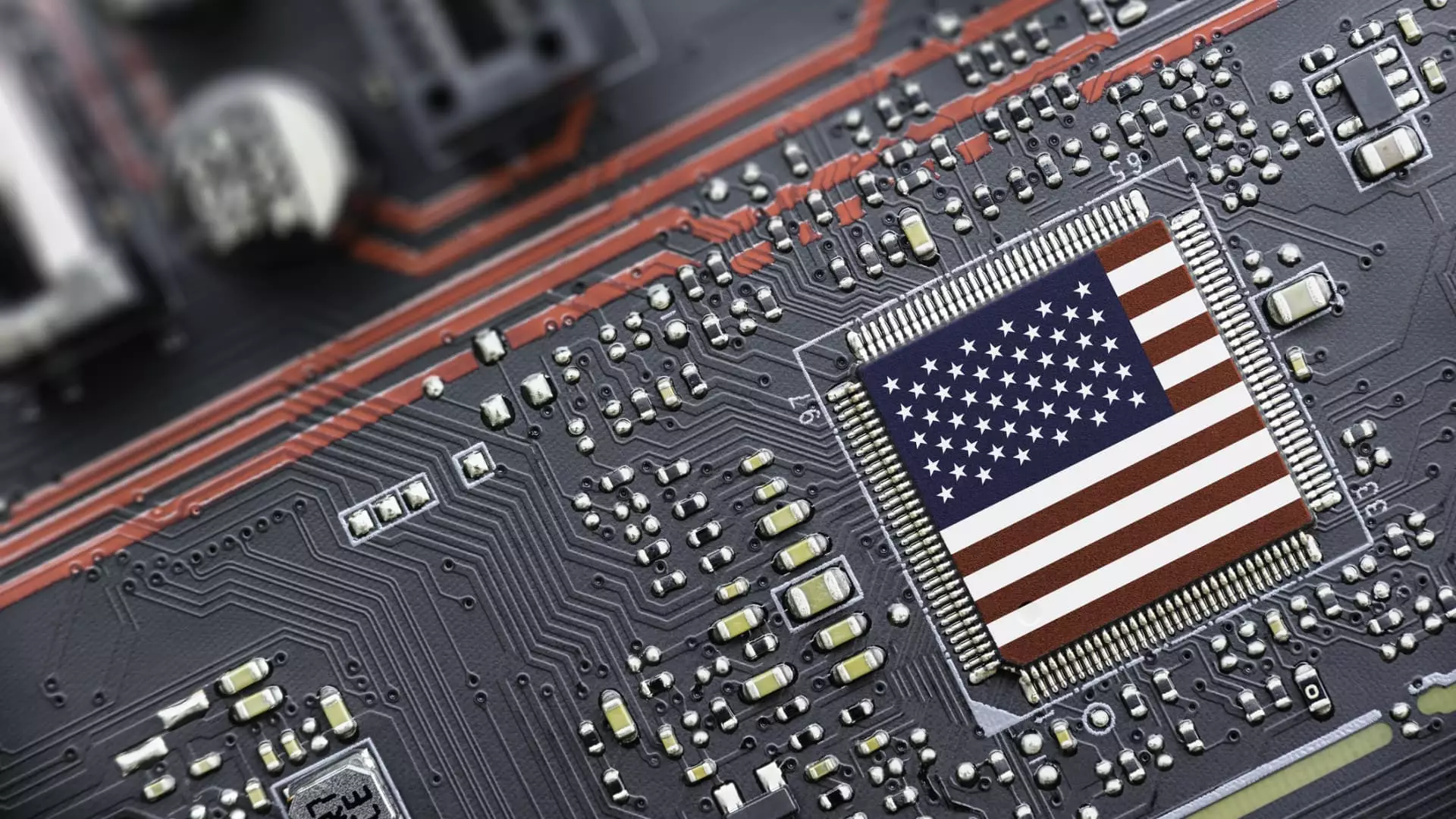In an economic climate where every whisper of good news is welcomed, the recent announcement from President Donald Trump regarding semiconductor tariffs briefly lit a spark of optimism in the markets. However, the subsequent plunge in chip stocks—despite what was heralded as promising news—reveals much deeper issues at play. Investors initially grinned at the news that semiconductors would escape hefty tariffs; however, the reality of the situation is far grimmer. The exemption seems more a temporary reprieve than a solution, akin to a band-aid covering a gaping wound. A price war is brewing beneath the surface, and releasing pressure can often lead to devastating consequences.
Investor Sentiment: Fear and Disillusionment
As the saying goes, the market is driven by perception as much as reality. Shares of major players like Nvidia, Micron, and Taiwan Semiconductor Manufacturing Company (TSMC) felt the sting of investor pessimism, resulting in declines that suggest a disheartened market. Nvidia, for instance, has seen its shares drop nearly 24% this year alone. This isn’t merely a reaction to the immediate news but rather a reflection of a broader discontent regarding the overall health of the semiconductor sector. The potential for future tariffs still looms, and while the White House may have kicked the can down the road, market reactions indicate that investors are not optimistic about what lies ahead.
Cascading Effects of Tariffs on Demand
More troubling than the immediate impact of potential tariffs is the cascading effect on demand that ensues when these levies are imposed. The semiconductor market is a cornerstone of countless industries, with chips being embedded in nearly every modern electronic device. According to Bernstein analyst Stacy Rasgon, nearly $200 billion in computing equipment along with $114 billion in wireless devices could be subjected to prohibitively high tariffs. These numbers don’t just represent financial losses; they are indicators of a potential consumer purchasing slump that could reverberate throughout the entire economy. Such developments could lead to a downward spiral, leaving the chip manufacturers grappling with not just lowered sales figures but possibly a profound demand collapse.
Complex Dynamics Between U.S. and China
Nvidia’s predicament is exacerbated by its relationship with the burgeoning Chinese technology market. Reports indicate that Chinese companies like Alibaba are banking on American chips to power their technological aspirations, placing massive orders with Nvidia. However, Nvidia must tread carefully; ramping up production in anticipation of Chinese demand risks creating surplus capacity if future export restrictions arise. This high-stakes balancing act raises questions about strategic business planning in a climate of uncertainty. The pressures from not only tariffs but also geopolitical tensions complicate matters further, creating a convoluted landscape that few corporate members are equipped to navigate.
Infrastructure Setbacks: The Hidden Crisis
If investors think the only threat to chip stocks comes from tariffs and trade wars, they are gravely mistaken. Recent decisions by major players like Microsoft to either delay or halt data center projects across various locations—from Indonesia to the United States—point toward a more extensive underlying issue: the overall demand for artificial intelligence infrastructure may not be as robust as previously believed. When leading tech firms signal uncertainty about future projects, it casts a long shadow over the industry’s growth prospects. CoreWeave, a cloud infrastructure provider, has already felt the pinch, with an 8% decline in stock value, suggesting that uncertainty in AI service demand could be this sector’s Achilles’ heel.
Protective Policies vs. Market Realities
While there are arguments to be made in favor of protective policies to bolster domestic semiconductor production, the reality may not align with the ideal projections. The prospect of a resurgence in domestic manufacturing is enticing, especially for American companies such as Intel. However, the reality is that a weakened demand landscape could easily overrun any potential benefits these policies present. Today’s market dynamics require a more nuanced understanding of how protectionism plays into global competition, innovation, and ultimately, economic health.
As the turbulence in chip stocks reminds us, optimism can be a fleeting emotion in the unpredictable world of finance; sometimes it’s best to tread lightly and prepare for the worst.

